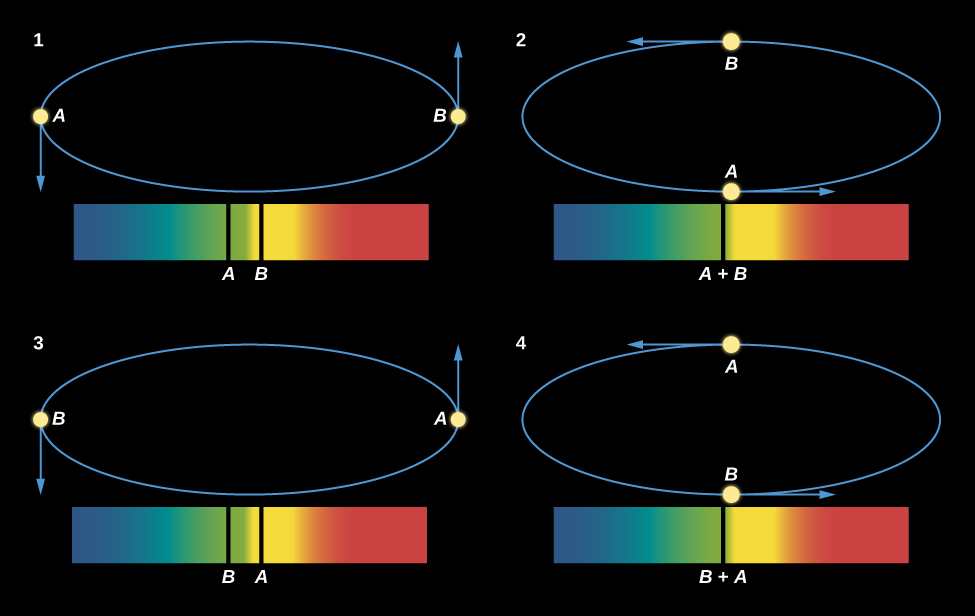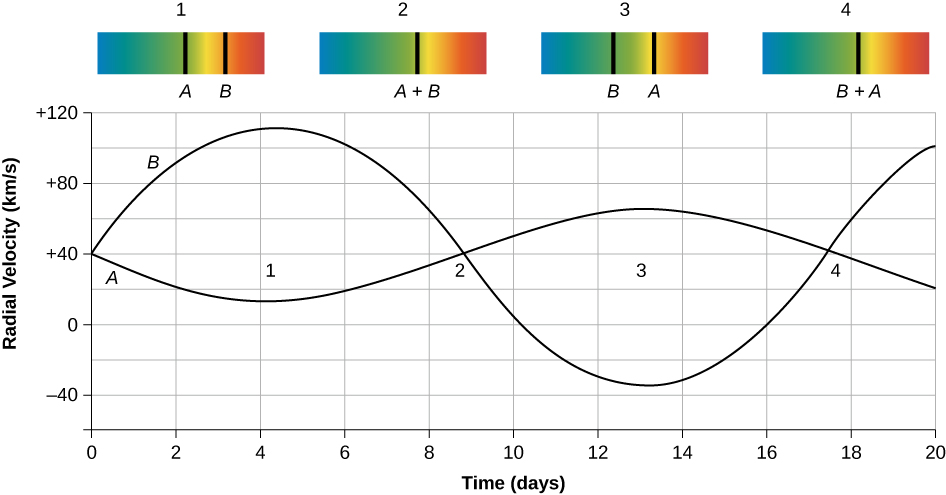| << Chapter < Page | Chapter >> Page > |

A plot showing how the velocities of the stars change with time is called a radial velocity curve ; the curve for the binary system in [link] is shown in [link] .

This animation lets you follow the orbits of a binary star system in various combinations of the masses of the two stars.
We can estimate the masses of binary star systems using Newton’s reformulation of Kepler’s third law (discussed in Newton’s Universal Law of Gravitation ). Kepler found that the time a planet takes to go around the Sun is related by a specific mathematical formula to its distance from the Sun. In our binary star situation, if two objects are in mutual revolution, then the period ( P ) with which they go around each other is related to the semimajor axis ( D ) of the orbit of one with respect to the other, according to this equation
where D is in astronomical units, P is measured in years, and M 1 + M 2 is the sum of the masses of the two stars in units of the Sun’s mass. This is a very useful formula for astronomers; it says that if we can observe the size of the orbit and the period of mutual revolution of the stars in a binary system, we can calculate the sum of their masses.
Most spectroscopic binaries have periods ranging from a few days to a few months, with separations of usually less than 1 AU between their member stars. Recall that an AU is the distance from Earth to the Sun, so this is a small separation and very hard to see at the distances of stars. This is why many of these systems are known to be double only through careful study of their spectra.

Notification Switch
Would you like to follow the 'Astronomy' conversation and receive update notifications?